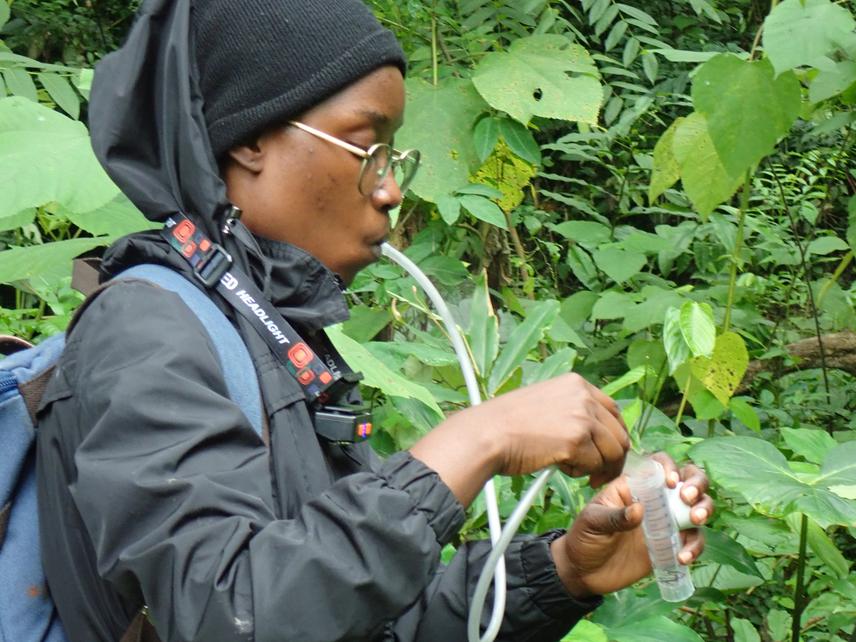Harriet Kinga
Spiders are known to be suitable indicators of environmental change and overall arthropod diversity but also provide important ecosystem services. Spider sensitivity to ecological changes reveals extinction threat on spiders and other species. However, limited taxonomic data exist in the West African region, preventing conservation initiatives. This study will investigate changes in abundance, taxonomic and functional diversity, and rate of energy transfer to spiders (as a proxy for predation) in three major habitats of spiders in tropical forests: the canopy, the litter layer, and the soil (including the surface). Analyses will be performed across a habitat gradient encompassing primary and secondary forests, restored forests, agroforestry plantations and post-mining unrestored areas under succession.

This study has as objectives:
1. Evaluate the taxonomic diversity of spiders and their kin) across a land-use type gradient ranging from primary forests to agroforestry plantations and post-mining sites.
2. Compare the community composition in three forest habitats (canopy, litter layer, and soil) across land-use types to understand how structural complexity affects spider diversity as indicator of overall arthropod diversity.
3. Identify to what extent land-use change affects species with different functional traits and determine environmental factors that drive these changes.
4. Describe new species of spiders from an understudied region and document species ranges through revisionary taxonomy to assist targeted conservation efforts in the future.
Sampling will be carried out in the Ahafo Region of Ghana, specifically in the Asukese forest reserve, the Bosomkese forest reserve, the Terchire restoration area, an abandoned gravel mine site in Terchire, and an agroforestry plantation in Terchire. There will be a collaboration with local NGOs and the involvement of students from national universities in the sampling and identification of spiders. Expected outcomes for the local and scientific communities are knowledge, awareness, museum collection and conservation of spiders and their kin, respectively, from an understudied Region.